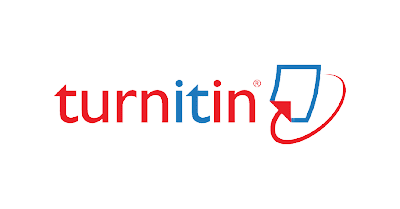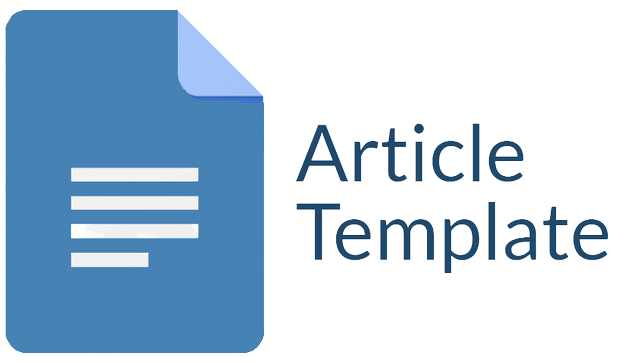INVESTIGATING STUDENTS' DIFFICULTIES IN LEARNING LISTENING COMPREHENSION SKILLS AT USWATUN HASANAH SENIOR HIGH SCHOOL
Abstract
This article is written to describe the students' difficulties in learning to listen in class X. This study aims to reveal the difficulties of listening comprehension by students and strategies to overcome listening difficulties in the English class. This research has been conducted at Senior High School, Selogudik Wetan, Pajarakan-Probolinggo. This study used descriptive and qualitative research. This research design refers to the tradition of ethnographic study research. Participants in this research were two student from 16 students. The researcher used the fill-in-the blank strategy to evaluate and validate the data. The researcher conducted observations by collecting data through documentation and conducting interviews with English-language students. The results of this study show that students have difficulties listening and have strategies to overcome these problems. These difficulties include a lack of vocabulary, speaking speed, accent, concentration, and motivation. In addition, the strategy used is to fill in the blank, which involves listening to an audio song and completing the missing lyrics by filling in the vocabulary of the lyrics. The conclusion of the research is that difficulties in listening can hinder student success. As well as strategies that can help students overcome listening difficulties. However, this research is expected to be developed by further researchers.
Key Word: student's difficulties; listening comprehension,;EFL learning.
Downloads
References
Abdalla, M. E., & Elhadi, E. N. (2015). Problems of Teaching and Learning Spoken English in Sudan.
Alzamil, J. (2021). Listening skills: Important but difficult to learn. Arab World English Journal (AWEJ) Volume, 12.
Bang, Sujin & Hiver, Phil. (2016). Investigating the structural relationships of cognitive and affective domains for L2 listening. Asian-Pacific Journal of Second and Foreign Language Education. DOI 10.1186/s40862-016-0013-8.
Creswell, John W & J. David Creswell. 2018. Research Design Qualitative, Quantitative, and Mixed Methods Approaches Fifth Edition. SAGE Publications, Inc.
Darling-White, M., & Banks, S. W. (2021). Speech rate varies with sentence length in typically developing children. Journal of Speech, Language, and Hearing Research, 64(6S), 2385-2391.
Datulio, J. (2023). Exploring the Aftereffects of Watching English Movies without Subtitles: Perspective of Students. Psychology and Education: A Multidisciplinary Journal, 8(1), 101-109.
Fraenkel, J. R. & Wallen, N. E. (2009). How to design and evaluate research in education. New York: McGraw-Hill Companies.
Gilakjani, A.P & Sabouri, N.B. (2016). Learners’ listening comprehension difficulties in English language learning. English Language Teaching, 9(6), 121-133.Retrieved on May 29, 2016 from www.ccsenet.org/journal/index.php/elt/article/download/59636/31953.
Hamdani, B. (2020). Enhancing Vocabulary Among EFL Young Learners Through PictureWord Inductive Model. IJOEEL: International Journal of English Education and Linguistics, 2(1), 9-16.
Hamdani, B., Islam, R., & Hotimah, H. (2021). Engaging Students’ Autonomous Learning across Vocational Secondary Schooling: Teachers’ Role and Challenge. English Teaching Journal and Research: Journal of English Education, Literature, And Linguistics, 1(2), 95-111.
Hamouda, A. (2013). An investigation of listening comprehension problems encountered by saudi students in the EL listening classroom. Retrieved on October 6, 2016 from www.hrmars.com/admin/pics/1882.pdf
Jiang, Y. (2009). Predicting strategy and listening comprehension. Asian Social Science, 5(1), 93-97. Retrieved on October 10, 2016 from www.ccsenet.org/journal/index.php/ass/article/viewFile/540/521.
Kholili, A. (2023). Investigating Factors Underlying Boredom in Learning English: The Case of Secondary School. Al-Lisan: Jurnal Bahasa (e-Journal), 8(1), 13-32. https://doi.org/10.30603/al.v8i1.3185.
Lange, C., & Costley, J. (2020). Improving online video lectures: learning challenges created by media. International Journal of Educational Technology in Higher Education, 17, 1-18.
Pratama, M. R., & Nurkhamidah, N. (2023). ANXIETY ON LISTENING COURSE AMONG STUDENTS DURING THE PANDEMIC OF COVID-19. JETAL: Journal of English Teaching & Applied Linguistic, 4(2), 83-96.
Renukadevi, D. (2014). The role of listening in language acquisition: The challenges strategies in teaching listening. International Journal Education and Information Studies, 4(1), 59-63. Retrieved on October 9, 2016 from https://www.ripublication.com/ijeisv1n1/ijeisv4n1_13.pdf.
Walker, N. (2014). Listening: The most difficult skill to teach. Research in Science Teaching, 23, 167-175. Retrieved on October 6, 2016 from www.encuentrojournal.org/textos/Walker_LISTENING%20.pdf
Copyright (c) 2024 Lailatul Fadilah, Muhammad Hifdil Islam, Achmad Kholili

This work is licensed under a Creative Commons Attribution-ShareAlike 4.0 International License.
Jurnal allows anyone to compose, correct, and do derivative works, even for commercial purposes, as long as they credit for the original work. This license is the freest. It is recommended for maximum distribution and use of licensed material.
The submitted paper is assumed not to contain any proprietary materials that are not protected by patent rights or patent applications; The responsibility for technical content and protection of proprietary materials rests with the authors and their organizations and not the responsibility of journal or its editorial staff. The primary (first/appropriate) author is responsible for ensuring that the article has been viewed and approved by all other authors. The author's responsibility is to obtain all necessary copyright waivers to use any copyrighted material in the manuscript before submission.
Jurnal Pendidikan, Sains dan Teknologi allows the author(s) to hold the copyright without restrictions and allow the author(s) to retain publishing rights without restrictions. Jurnal Pendidikan, Sains dan Teknologi CC-BY-SA or an equivalent license as the optimal license for the publication, distribution, use, and reuse of scholarly work. Jurnal Pendidikan, Sains dan Teknologi allows the author(s) to hold the copyright without restrictions and allow the author(s) to retain publishing rights without restrictions. Jurnal Pendidikan, Sains dan Teknologi CC-BY-SA or an equivalent license as the optimal license for the publication, distribution, use, and reuse of scholarly work.
In developing strategy and setting priorities Jurnal Pendidikan, Sains dan Teknologi recognize that free access is better than priced access, libre access is better than free access, and libre under CC-BY-SA or the equivalent is better than libre under more restrictive open licenses. We should achieve what we can when we can. We should not delay achieving free in order to achieve libre, and we should not stop with free when we can achieve libre.
Jurnal Pendidikan, Sains dan Teknologi is licensed under a Creative Commons Attribution-ShareAlike 4.0 International License.
You are free to:
- Share a copy and redistribute the material in any medium or format
- Adapt a remix, transform, and build upon the material for any purpose, even commercially.
- The licensor cannot revoke these freedoms as long as you follow the license terms.






